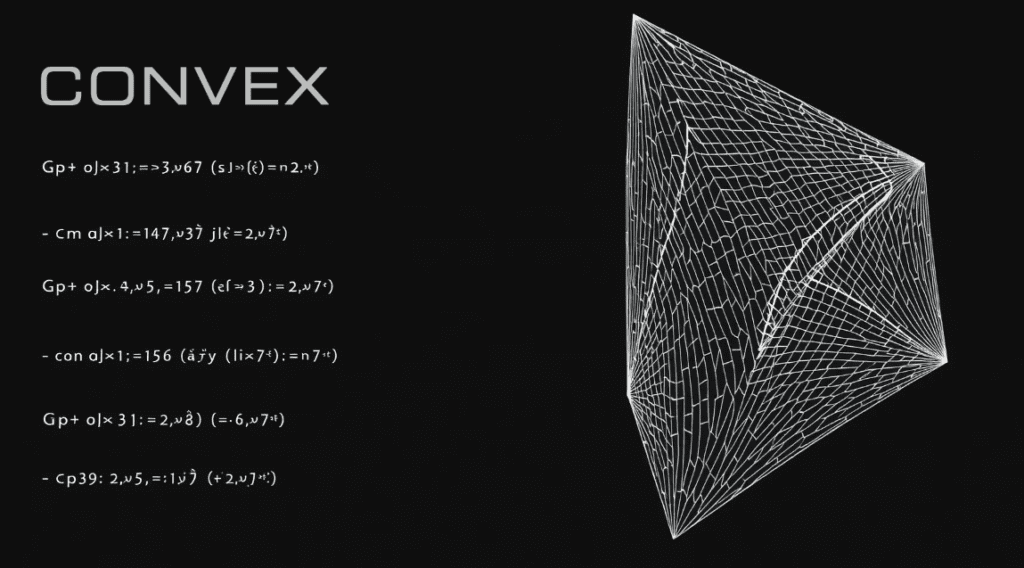
Why Convex Optimization is Critical in Machine Learning
Machine learning is all about finding patterns in data, but at the core of every successful model is convex optimization.
This mathematical technique is the engine driving many of the algorithms used today, particularly during model training. When we hear terms like “minimizing loss” or “maximizing accuracy,” convex optimization is quietly working behind the scenes to achieve these goals.
But why convex optimization? It’s because of the unique properties it offers—guaranteed convergence to the global minimum and computational efficiency. For machine learning models, this ensures that we can find the best fit for our data in a reliable, structured manner.
What is Convex Optimization?
Convex optimization refers to the process of minimizing a convex function over a convex set. If you’re not familiar with these terms, here’s a simple breakdown:
- Convex functions are those where a straight line connecting any two points on the graph lies entirely above the graph itself.
- A convex set is a set where, for any two points within the set, the line connecting them lies entirely within the set.
The main advantage? If you minimize a convex function, there’s only one global minimum—no confusing local minima to trap your optimization process.
This property makes convex optimization highly valuable in machine learning. When you’re training a model, you want to minimize a loss function (like mean squared error in linear regression). If this loss function is convex, you’re guaranteed to find the best possible solution.

The Role of Convex Optimization in Model Training
During the training process, machine learning models attempt to learn patterns from data by adjusting parameters to minimize the loss function—a mathematical representation of how far off the model’s predictions are from the true values.
Convex optimization is used to efficiently minimize this loss. For many common machine learning models, such as linear regression, logistic regression, and support vector machines (SVMs), the loss functions are convex, ensuring that the optimization algorithms can converge to the best possible model.
For example, in linear regression, the optimization process involves finding the best coefficients that minimize the sum of squared errors between the predicted and actual data points. Since the loss function here is convex, convex optimization techniques can be applied, making it straightforward to find the optimal solution.
Algorithms for Convex Optimization in Machine Learning
There are several algorithms specifically designed to solve convex optimization problems in machine learning. Some of the most commonly used include:
Gradient Descent
Perhaps the most well-known optimization algorithm, gradient descent is widely used for training machine learning models. In convex optimization, gradient descent works by iteratively updating the model’s parameters in the opposite direction of the gradient (or slope) of the loss function. In convex problems, this guarantees that the model will eventually converge to the global minimum.
Stochastic Gradient Descent (SGD)
A variation of gradient descent, SGD is particularly useful when dealing with large datasets. Instead of calculating the gradient based on the entire dataset, SGD updates the model parameters using a randomly selected subset of the data (a mini-batch) at each iteration. This makes the optimization process faster and more scalable, though it can introduce some noise into the convergence process.
Newton’s Method
Newton’s method is another optimization algorithm that can be used for convex problems. It takes into account not only the gradient but also the curvature of the loss function, allowing it to converge faster than standard gradient descent in certain cases. However, it’s more computationally expensive and is typically used when higher precision is required.
L-BFGS (Limited-memory Broyden–Fletcher–Goldfarb–Shanno)
L-BFGS is a popular optimization algorithm that is more efficient than Newton’s method for large-scale problems. It approximates the curvature information required by Newton’s method without storing large matrices, making it suitable for high-dimensional machine learning problems like natural language processing (NLP) and computer vision.

The Importance of Convexity in Avoiding Local Minima
A major benefit of convex optimization is that it avoids the issue of local minima—points where the loss function appears to be minimized, but isn’t actually the lowest possible value. In non-convex problems (like those often found in deep learning), local minima can trap the optimization process, preventing the model from achieving the best performance.
In convex optimization, since the function has only one global minimum, there are no such traps. This makes the optimization process much simpler and more predictable.
Regularization and Convex Optimization
Regularization techniques, such as L1 (Lasso) and L2 (Ridge) regularization, are used in machine learning to prevent overfitting by adding penalty terms to the loss function. Interestingly, these regularization techniques often result in convex optimization problems.
For example, in L2 regularization (Ridge regression), a penalty proportional to the square of the model parameters is added to the loss function, encouraging smaller coefficient values and reducing the model’s complexity. The resulting objective function remains convex, allowing convex optimization algorithms to be used to efficiently find the solution.
Lasso (L1) regularization introduces sparsity, setting many coefficients to zero, but it also forms a convex problem, making the optimization process tractable.
Applications of Convex Optimization in Machine Learning
Convex optimization is everywhere in machine learning. Some specific applications include:
Support Vector Machines (SVMs)
SVMs use convex optimization to find the hyperplane that maximally separates two classes. The optimization problem involves minimizing a convex function, ensuring that the SVM finds the best possible decision boundary between classes.
Logistic Regression
In logistic regression, convex optimization helps in minimizing the log-likelihood loss function. This leads to the best-fitting model for binary classification problems, where the goal is to predict one of two outcomes.
Recommendation Systems
Convex optimization techniques are used in recommendation systems to predict user preferences based on historical data. These models often rely on minimizing a convex objective function that represents the difference between predicted and actual user ratings.
The Future of Convex Optimization in Machine Learning
While convex optimization is the backbone of many machine learning models, more complex problems (like deep neural networks) involve non-convex optimization. However, convex relaxation techniques, where non-convex problems are approximated by convex ones, are being actively researched. This hybrid approach allows for faster and more reliable solutions in otherwise difficult optimization landscapes.
Additionally, as machine learning continues to evolve, efficient convex optimization algorithms will remain vital, especially in large-scale, real-time applications.
Convex optimization ensures that even as models become more complex, the underlying training processes remain mathematically grounded, reliable, and computationally feasible. It is, and will continue to be, a cornerstone of machine learning advancement.
FAQs
Why is convex optimization crucial for model training?
Convex optimization helps models converge faster and more efficiently. Since there’s only one global minimum, it prevents the model from getting stuck in local minima, ensuring that the best solution is found in less time.
How does convex optimization differ from non-convex optimization?
Non-convex optimization involves functions that may have multiple local minima and maxima. This makes it harder to find the best solution during training because the process can get trapped in suboptimal points, slowing down convergence.
Where is convex optimization commonly used in machine learning?
Convex optimization is used in a wide range of machine learning algorithms, such as support vector machines (SVMs), logistic regression, and least-squares problems. These algorithms rely on finding the best parameters efficiently, which convex optimization techniques excel at.
Why does convex optimization make model training more efficient?
It provides computational efficiency because the algorithms designed for convex problems can converge quickly. The absence of multiple minima ensures that fewer iterations are needed to find the best solution, saving both time and resources during training.
Can convex optimization be applied to deep learning models?
Many deep learning models rely on non-convex optimization due to their complex architectures. However, convex optimization can still be applied to certain sub-problems or simplified versions of these models, helping streamline the training process.
Are there limitations to convex optimization in machine learning?
One limitation is that not all machine learning problems can be formulated as convex problems. Complex neural networks, for example, often involve non-convex objective functions, making convex optimization less applicable. Additionally, convex optimization can be restricted by the need for certain assumptions, such as differentiability.
How does convex optimization improve accuracy in model training?
By ensuring that the optimal solution is reached without getting stuck in local minima, convex optimization enhances the overall accuracy of model training. It ensures that the global minimum is found, which directly correlates to better model performance.
What are some common algorithms used in convex optimization?
Common algorithms include gradient descent, subgradient methods, and interior-point methods. These are widely used because they efficiently handle convex problems and guarantee convergence to the global minimum.
Is gradient descent considered a convex optimization method?
Gradient descent is a general optimization method, but it becomes a convex optimization technique when applied to convex functions. In these cases, gradient descent is guaranteed to converge to the global minimum, making it highly effective for training models based on convex problems.
How does convex optimization relate to regularization in machine learning?
Regularization techniques like L1 and L2 are often applied in convex optimization problems to prevent overfitting. These regularization terms are usually convex, making them compatible with convex optimization algorithms to improve model generalization.
Does convex optimization always guarantee faster convergence?
In convex problems, optimization algorithms like gradient descent can converge faster compared to non-convex ones. However, the actual speed of convergence also depends on factors like the step size, the complexity of the problem, and the specific algorithm used.
Can convex optimization be parallelized for faster computation?
Yes, many convex optimization problems can be parallelized. Techniques such as distributed gradient descent allow computations to be split across multiple processors, speeding up the training process, especially for large-scale datasets.
How does convex optimization handle constraints during model training?
Convex optimization can easily incorporate constraints into the objective function, such as inequality or equality constraints. This makes it useful in scenarios where certain conditions must be met during the optimization process, like budget limits or resource constraints in a project.
Why is convex optimization preferred in some machine learning tasks?
It is preferred because of its guaranteed convergence and efficiency. In tasks like regression, classification, and even some clustering algorithms, the convex nature of the objective function ensures optimal and fast solutions without the complexity of non-convex landscapes.
Are there any practical tools for applying convex optimization?
Popular tools include libraries like CVXPY and MATLAB’s optimization toolbox, both of which are widely used in academia and industry to solve convex optimization problems. These tools provide an interface to define and solve convex problems easily.
Resources for Further Learning
- Stanford University – Convex Optimization Course: A deep dive into convex optimization, its theory, and applications in machine learning.
Explore the course - Convex Optimization Book by Stephen Boyd and Lieven Vandenberghe: A comprehensive resource on convex optimization, perfect for those looking to understand the math behind it.
Read more here